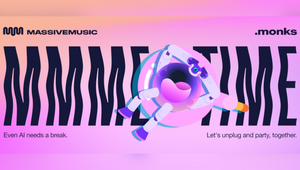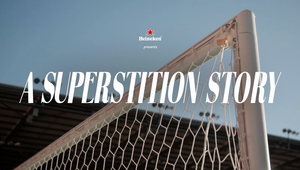
Optimising Sonic Branding and Music Strategy with Data

“Six years ago, I was actually in the world of academia and specialised in the psychology and neuroscience of music and sound. It was about uncovering, from more of an academic perspective, how music impacts us emotionally,” says Aifric Lennon, MassiveMusic and Songtradr’s director of research strategy.
With her background in neuroscience, she left behind the medical lab and channelled her efforts into music, combining the two worlds and embarking on a Masters in music mind and brain from Goldsmiths University. In her first few years at MassiveMusic and Songtradr, she worked in the sonic branding and music strategy spaces for TikTok, Wikimedia, AccuWeather, Ithra and O2.
Over the last two years, she’s headed up the research departments at the aforementioned music companies. “Essentially, our research department exists to measure, predict and optimise the way that the brands and agencies we work with use music and sound,” she says. “Whether that’s a campaign, sonic branding assets or use of voice, we developed a framework that removes subjectivity from the music choices brands are making.”
With the aim of measuring, predicting and optimising the work that clients create, this musical approach supports creativity and backs it up with data, to make it even more effective. “We're all about how we can use data and insights to really optimise the creative work, and often actually enable braver creative work as well.” She explains how testing ‘wildcard’ options becomes easier, and divided opinions can be backed up with facts and insight.
As Aifric explains, insight comes from a portfolio of data at every stage of the process. “Sometimes I describe it as a funnel, where a brand is looking for music and we are looking to help find music for a campaign. At the top of the funnel, the widest part is the endless amounts of tracks that you could potentially select, or create for that campaign. And the bottom of the funnel is the perfect track. So at every stage of that funnel, we have different tools that we can apply.”
Tapping into insights from various avenues, which hone in on the sonic and music-focused metrics through consumer panel testing, the team can target any audience profile anywhere in the world – at an accelerated pace. The team use various methodologies, but also their own proprietary AI-based insights tool “which essentially is able to X-ray, any piece of music across 350 different variables, and is able to – in a matter of seconds – predict not only things like the genre, the mood and the feel of the music, but actually able to predict things like the audience.”
With the power of this AI tool, the team can also predict the age group the music will resonate with, the genders, and location.
Aside from this, Aifric and the team also tap into existing literature on the topics. She explains, “We have quite a few people working at Songtradr on the research team who have a background in neuroscience and the psychology side of music and sound. We have a fairly large body of literature, either that we’ve created ourselves or delivered in white papers.”
The way the team works with clients varies, depending on when in the process they get involved. While it works best for them to come in during the initial stages, to understand the key objectives and insights, using their tools to target a specific audience, they are able to join in at any stage.
“With sonic identity work, we might be brought in mid-creative process when there’s a selection of routes, but the client wants some validation to make sure the assets are going to drive the effectiveness in the market.” Aifric continues, “We do pre-launch testing but also work post-launch to come in and track the success of the music or the sonic logo over time.”
Aifric also provided specifics on the neurological side of things and how our brain reacts to the music we hear. “There are a few factors to consider,” she explains, “Memory encoding or memorability is something that we measure, especially when looking at sonic branding projects – there’s no point in developing sonic assets if it isn’t going to build equity for a brand and become instantly recognisable.”
She further explains how there’s an implicit measurement platform the team uses, presenting a chosen sound in a “clutter reel” of other sounds. From there, they measure the accuracy and speed of response to the sound they’re testing - in other words, how well that one sound stands out amongst the others. Once this process is complete, the team has a better idea of how memorable a sound will be to the audience, and how effective it will be within a piece of branded content.
Further developing on the neuroscience side of things, she says, “In terms of the brain, we can react to sounds quicker than visuals and when we’re exposed to a sound enough times with a memorable hook – melody or rhythm, melody tends to be the strongest – our brain becomes accustomed to that pattern and we recall it.” And so earworms are created. The sound elicits the memories and emotions associated with it, and it becomes more instantly recognisable to an audience.

Creating these sounds, however, is a fine art. Aifric explains how the team recently created sounds for physical products, which may play amazingly on studio speakers but might not translate when it comes to smaller or more personal speakers. “When we get to that stage, we work with the design and product teams to see how the practicalities of the audio will cut through and be fit for purpose.”
Recently, as far as trends go, UGC [user-generated content] driven, viral music moments and striking sonic branding are elements that brands have been recently capitalising on. “Brands like Netflix and McDonald’s – ‘I’m Lovin' It’ – or even the work we recently did for TikTok around sonic identity,” says Aifric. “With the rise of sonic branding and the real resurgence it’s having, it’s interesting to see that proliferating through platforms like TikTok and becoming more relevant with audiences as well.”
She concludes, “It's how brands are tapping into that, culturally, and how brands are becoming much more even more audience-focused than ever.”















